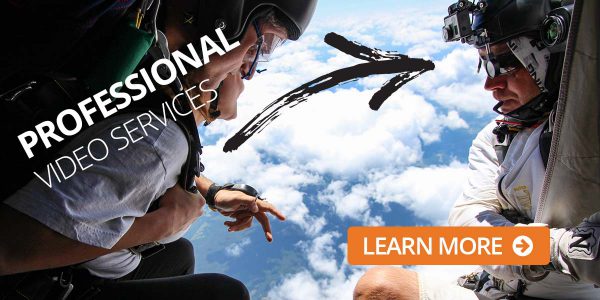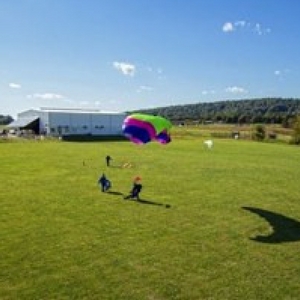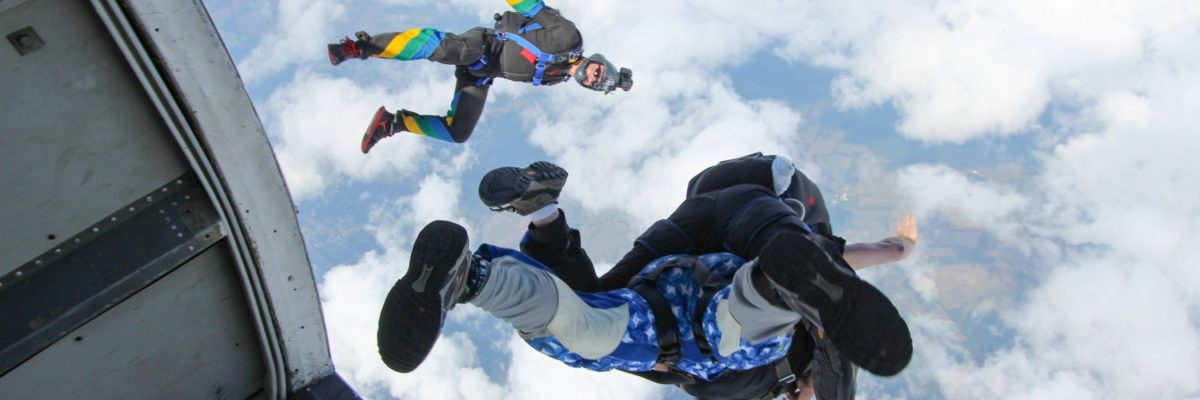
Skydive Body Positions & Why They Matter
Friday, September 30, 2022
- Skydive Orange
- 9/30/22
- 0
- General
One thing any skydiver will tell you is how important body position is in making a successful skydive. This is especially the case during two key parts of the jump: when exiting the aircraft and during freefall.
Skydive positions for exiting the aircraft can vary based on the type of jump, plane, or instructor, but here’s a helpful note: at Skydive Orange, we fly a super sick and lightning-fast twin otter in which you’ll either be seated or crouched in the door before exiting.
Ready, set, BANANA! While licensed skydivers can safely freefall in a variety of ways, it is generally agreed that the ideal freefalling pose for tandem students is in a belly-to-earth arched position (think: look like a banana).
Let’s jump into the specifics of these skydive body positions for exit and freefall, and why they’re important!
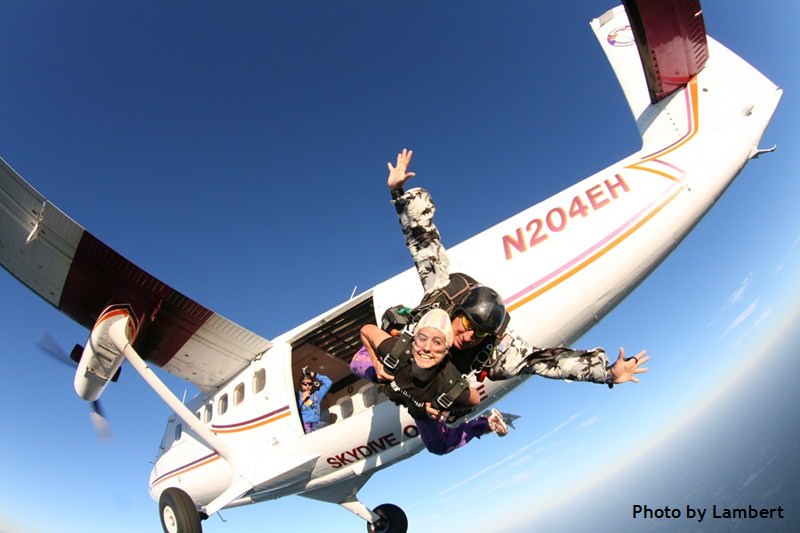
Licensed Skydive Exit
Licensed skydivers can exit using a variety of skydiving techniques and skydiving poses; there is no end to the possibilities! Once someone is cleared to skydive without instructors watching them, it means they’ve been deemed safe to themselves and others in the sky, which includes being able to regain stability from any position. This is why you can see solo skydivers back-flipping, diving, or even holding on to the “grippers” on other jumpers as they leave the airplane! Ultimately, the type of exit depends on the jump that is about to be completed – but, more on that later.
Tandem Skydive Exit
A tandem skydiving exit is a bit trickier than a solo skydiving exit because there are two people attached and moving together! You will most likely be in a seated or deep-squatted position and slowly make your way towards the door by sashaying or “scooching” down the bench. Your instructor will likely ask you to grasp your harness with both hands so you’ll know exactly where they should be and prevent you from accidentally grabbing something you shouldn’t (oops).
When it is time to send it (wooo!) your instructor will give a count-off, allowing your videographer (if you purchased a media package) to leave the aircraft simultaneously, and then you both will fall out of the door. There is no pushing or jumping, but rather just falling into and becoming one with the sky! Always remember that the most important thing about tandem skydiving – right before having fun – is to listen to your tandem instructor.
Note: Before you and your instructor make your way to the door, they will ask you some variation of “are you ready to skydive!?” to which you’ll be more than prepared to say a resounding “YES!” But if you’re not, feel free to communicate that. Be mindful that “no” sounds just like “go’” and “I don’t wanna go” sounds like “Geronimo,” so make your intentions clear.
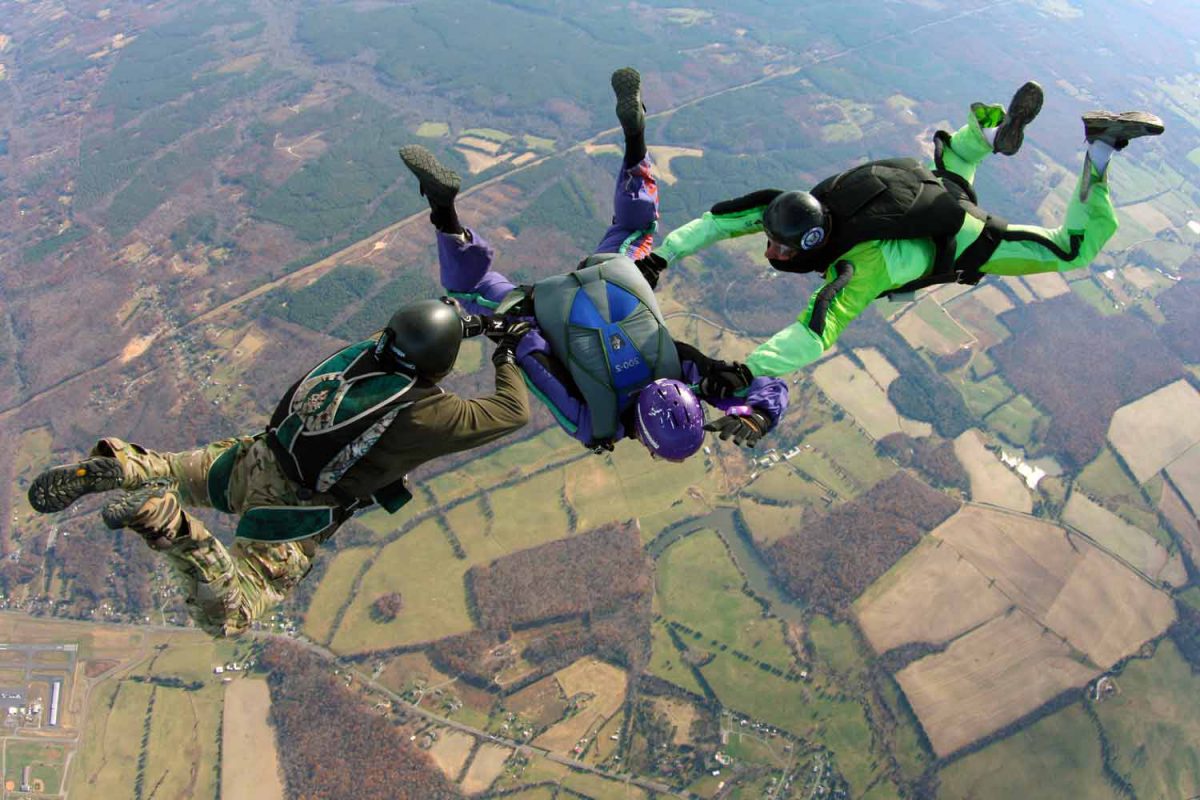
Solo Skydive Freefall
Solo skydiving has just as much variability as the exits and is so much fun! Let’s briefly address some of the most common disciplines of freefall.
- Freeflying: sitting, standing, back-flying, and flying in a head-down orientation.
- Relative work (aka belly jumping): belly-to-earth jumps done with friends, turning points, working on fall rate.
- Wingsuiting: wearing a specific nylon suit that slows your fall rate and allows you to “fly” or glide through the air.
- Hop & pop: jumping from any altitude (typically a low one) and almost immediately “popping” or deploying your parachute – it is critical to have a stable exit position for this one!
The most common form of skydiving is belly jumping, which makes it an important discipline to be proficient in and remain current in.
What is Tracking & WHY is it Important?
Tracking is debatably one of the most important parts of a successful skydive with licensed jumpers that involves multiple people. Tracking is when the licensed skydiver forgets all about whatever contorted position they’re in and “de-arches” or becomes flat on their belly while lowering their arms to their side. Envision Superman. This position allows them to shoot forward and create distance/separation between them and other skydivers. Tracking is done for about 5 seconds right before deployment of the parachute. It ensures that when the skydiver opens their canopy there won’t be anyone in their way, and they won’t be in anyone else’s way.
Tandem Skydive Freefall
A tandem skydive freefall is vastly different from a solo freefall because you’re secured to a professional instructor and you both result in a higher body density than a solo jumper. After you exit the plane, your instructor will tap you to let you know when it’s okay to let go of your harness. This is when you’ll arch, arch, arch (BANANA!) to create the most surface area and, in turn, the most stable position. At this point, you’ll look around, smile, and HAVE FUN!
How to Prepare
On jump day all you need to bring is your smiling self and a valid form of ID! BUT, if you want to have the best first jump position possible there are three things you can do:
- Stretch. Light stretching the day before and the day of the jump won’t hurt! It’ll limber you up to nail the perfect “banana” position.
- Hydrate. Drinking water keeps our muscles from getting tight and can help us be bendier. We recommend drinking water as you usually would on the day of your jump.
- Relax. Take some deep breaths! Our instructors and team make it their duty, day in and day out, to make sure you have the best first jump possible … we are here for you!
Ready to get your jump on?! Confident you can nail the arch? Book your tandem now and don’t hesitate to reach out with any questions.
The largest tandem skydiving center near Northern Virginia, Washington D.C. and Maryland.
Copyright © 2024, Skydive Orange, All Rights Reserved.
DropZone Web Design & Marketing by Beyond Marketing, LLC
